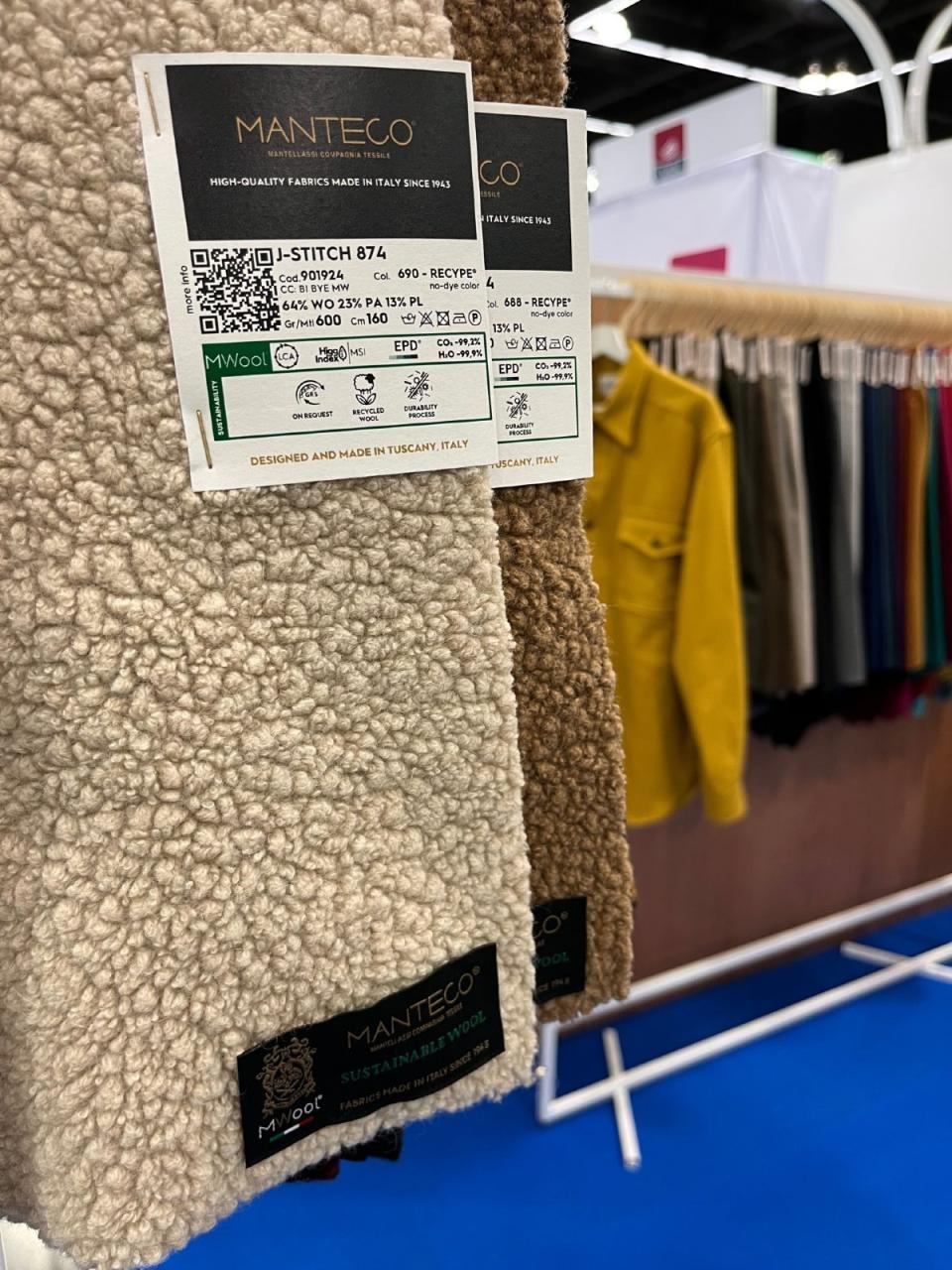Wool Re-Introduces Itself at Functional Fabric Fair

The Functional Fabric Fair powered by Performance Days returned to Portland’s Oregon Convention Center last week highlighting the latest advancements in fabric and nanofiber technologies. Representing 265 suppliers from around the world, the trade show featured the best in thermoregulation, cooling and odor-fighting technologies, as well as innovations in water-repellency and biodegradability and a renewed focus on wool.
Fibre52, the Houston-based creators of a proprietary bio-additive that gives cotton moisture and thermal regulation qualities, was a first-time vendor and Swiss company Bluesign, an industry leader in global textile supply chain certification, made its American debut at a Functional Fabric Fair event.
More from Sourcing Journal
Ciclo, a technology that creates biodegradable “nucleation spots” on synthetic fibers, was one of the event’s “Innovation Sphere” recipients, featuring a high-pile sherpa in 100 percent biodegradable polyester developed by Concept III. The technology, being taken to a global scale by Parkdale Mills, is making its way into home goods, like rugs, that will soon be available at Target, said Preston Bullock, a Parkdale marketing and sales associate.
Other notable innovations include Polycore’s water-based PU collaboration with GroundTruth to sequester carbon from the atmosphere and put it into the coating of a backpack to increase durability by 40 percent; Graphene One’s Kyorene, a composite fiber that’s 100 times stronger than steel, expected to be included in a Lee denim collection to release sometime next year.
Cocona is working to apply its dynamic thermoregulation technology to regenerated cellulosic fibers by spring; and Acteev, best known for its award-winning anti-microbial, odor-free technology announced a biobased polyamide made from castor oil components, to be commercially available by the end of this month.
Aside from advancements derived from synthetic components, the Functional Fabric Fair saw a nod to ancient knowledge and eco-friendly practices through zero-waste initiatives, like Re:Down, a closed-loop down and feather recycler; creative bleach-free relief effects from Cotton Inc. through TS Designs’ Rehance technology; and a mint additive from Sanitized providing natural antimicrobial properties and odor management to cotton textiles.
Within this back-to-nature lean was a prominent resurgence in wool. The original ‘performance fiber’ prized for its natural thermoregulation, odor and flame-resistant qualities, wool served as the cornerstone for outdoor apparel over a century ago.

Indicators of wool re-emerging in the market were apparent in Südwolle Group’s move to add wool sourced from Colorado to its offerings; Tencel bringing merino wool into the activewear space with added pointelle structure for ventilation through a collaboration with Icebreaker; Manteco showcasing wool-brand fabrics; and Hemp Fortex developing beta yarns to promote wool in shoes. “Trouble sourcing cotton led us to use Australian wool,” said Alejandra Diaz, assistant manager of marketing at Hemp Fortex.
Also in attendance was Doug Hoscheck, the co-creator of Polarfleece. His latest project: Portland Woolen Mills, an effort to bring natural wool insulation back to the outdoor apparel and defense industries.
“Wool is really coming back,” said Bethany Pollack from Canton, Mass.-based Draper Knitting Company, a textile manufacturer and member of the United States Footwear Manufacturers Association.
After launching The Wool Bar in 2019 to offer smaller batch orders and shorter lead times, Draper experienced an increased demand for the fiber. It has partnered with the Nativa Shaniko group, a U.S.-based regenerative wool program trusted by J.Crew, Ralph Lauren, Madewell and Reformation, to source Responsible Wool Standard-certified fiber from 10 domestic farms across five American states.
“It’s a new era,” said Malvina Hoxhait, director of business development for Chargeurs Nativa, pointing to a ‘transition phase’ underway in the industry. While legislation may be prompting some brands to make sure they have strategies in place around material and carbon impact for their business, many companies are calling on Nativa to make sure their product, and the facilities they work with, are compliant and consistent with their sustainable marketing.
“Everyone wants something unique and innovative, but also something that meets their sustainability data and claims,” Hoxhait said.
“The industry has seen a surge in wool innovation, particularly in non-woven insulation as a replacement to down and synthetics,” Greg Lucier, the North American sales lead for HD Wool, told Sourcing Journal. The UK-based company has developed washable wool using PLA, or polylactic acid, derived from sugar beets, and makes its traceable ‘Land to Market’ regenerative wool available to brands, through a partnership with the Savory Institute.
In a past life, Lucier operated four Vermont-based outdoor companies, before becoming the VP of sales and marketing for yylon at Dupont. Given his experience in the active and outdoor performance sphere, Lucier says wool is a formidable contender against synthetics and nano technologies for its breathability, softness and thermoregulating properties that offer adaptability in various climates. Wool can absorb 30 percent of its weight in moisture without feeling wet, and withstand temperatures of 570-600°C without melting or releasing harmful fumes. It’s considered a natural carbon sink, Lucier added.
“Educating consumers about the benefits of wool, including its durability and longevity in contrast to the disposable nature of fast fashion, is paramount,” he said. “Wool is being rediscovered and we are leading that charge.”

